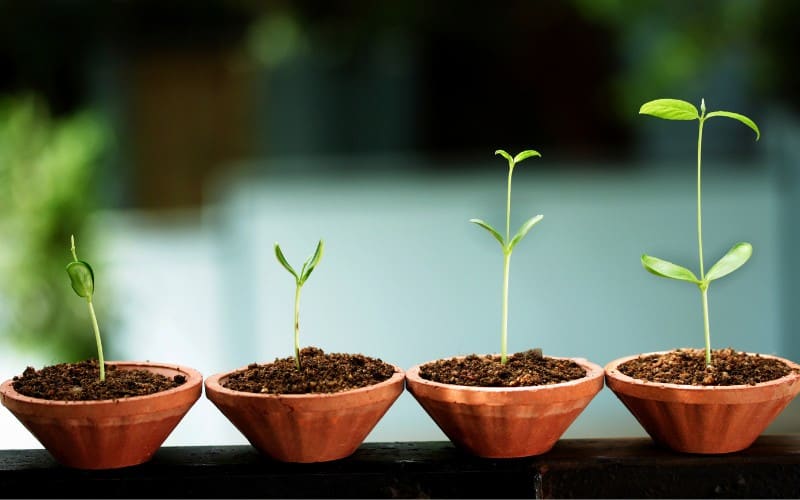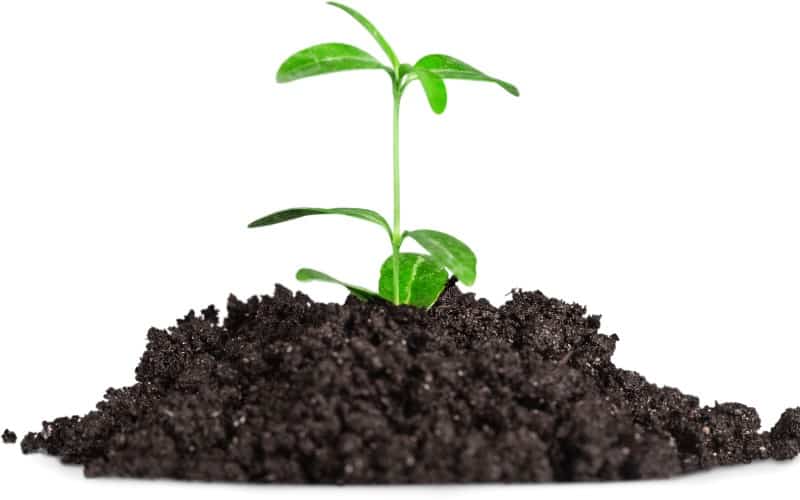One of the characteristics of all living things is growth. Unlike the growth of animals that stops at a certain limit which is determined mostly by the genes, growth in plants is quite different.
In animals and humans, the growth is referred to as determinate growth because the growth is determined by some factors. Further nutrients absorbed by the body will be used to keep the body and not to initiate a visible increase in size.
Plant growth is referred to as indeterminate growth. This means that they can continue to grow taller or thicker as long as they live. However, at some time, the growth is slowed, but as long as they wish to grow, they will do so.
Today, we're going to be talking about the different types of growth in plants. Plant growth is basically categorized into primary and secondary growth and we will explain both of them in detail as you read on.
Table of Contents
Different Types Of Growth In Plants

1. Primary growth in plants
Primary growth is the type of growth experienced by all plants. Simply put, it is the upward growth of the stem, all its constituents above the soil, and the downward growth of the root.
This growth occurs at the apices, or tips, of stems and roots.
What causes this growth?
Primary growth is initiated by rapidly-dividing cells in the apical meristems at the shoot tip and root tip. Elongation of the cells also encourages primary growth.
The continual growth of the plant is geared towards a better reach for water by the root and sunlight by the stem and leaves.
The apical meristem in the plant is where the most cell division takes place (this is called mitosis).
Let us consider the extension of the shoot.
The shoot apical meristem as against the root apical meristem is present in the shoot. It is through the activity of the shoot apical meristem that growth is established.
Shoot apical meristem is present at the tip of the plant stem. So plant growth occurs at the tip of the shoot and not from the bottom of the stem.
In primary growth, a phenomenon known as apical dominance is experienced. This makes the main, central stem of the plant dominant over other sides of the stem. Hence, the plant grows upwards while reaching out for better sunlight.
This knowledge of apical dominance is used by gardeners when pruning their plants. If they desire to make the plant spread wide across rather than upward growth, the apical bud is cut off when pruning. If the apical bud is pruned off, the axillary buds will start forming lateral branches.dener
The root is not also left out of the primary growth. The apical meristem is also present in the root and is referred to as the root apical meristem. Their activities are similar to that of the shoot apical meristem. The only difference is that growth goes down into the ground.
Read Also: Top Brussel Sprouts Growing Problems
2. Secondary growth in plants
While primary growth leads to an increase in length or height of the entire plant including the stem and root, secondary growth initiates the increase in size and thickness of the stem.
So what causes secondary growth?
This type of growth is credited to the activity of the lateral meristems. Lateral meristems include the vascular cambium and cork cambium in woody plants.
Recall that we have previously stated that one of the determinants of plant growth is cell division. The same case applies to secondary growth.
But in this case, lateral meristems are regions of high cell division activity. The cells that are formed grow outward rather than upward in the case of primary growth.
While all plants experience primary growth, not all plants experience secondary growth. Eudicots are the only plants that go through secondary growth. On the other hand, monocots, do not experience secondary growth.
The lateral meristems responsible for secondary growth are known as cambiums. There are two main lateral meristems in secondary growth. They include the vascular cambium and the cork cambium.
Vascular cambiums produce supporting tissues for the shoot and aid the transportation of water and nutrients. These tissues are secondary xylem and phloem.
It adds secondary xylem on its interior and adds secondary phloem on its exterior. For trees, the secondary xylem forms wood while the secondary phloem forms the bark of the tree. Over time, the tree sheds the bark to pave way for newer layers.
A study of a cross-section of a stem shows that over time, the wood of the tree gets bigger while the bark remains narrow.
While all these happen with eudicots, monocots don’t have secondary growth. This is because monocots do not get very wide, except for some monocots like palm trees. However, palm trees can get pretty thick in the middle but this is not as a result of secondary growth.
But how is this possible?
When palm shed their leaves, they do not go off completely. The base remains attached and blends with the stem. This makes the palm stem wider.
6 Stages Of Plant Growth
Irrespectively of the type of growth in plants (primary and secondary growth), plant growth is in stages. Just as humans have stages of growth from infant, toddler, adolescent to the adult stage.
There are about six stages of plant growth. They include seedling, sprout, vegetative, budding, flowering, and ripening stages.
The nutritional need of each stage differs from the other.
1. Sprout
This is the first stage of plant growth. Seeds contain a small parcel of nutrients, and if all conditions for germination are met, they begin to grow their first pair of leaves.
2. Seedling
A seedling is a young plant that develops out of a plant embryo from a seed. A seedling consists of the radicle (embryonic root), the hypocotyl (embryonic shoot), and the cotyledons (seed leaves).
3. Vegetative
At this stage of plant growth, the plant is concerned with developing new leaves and foliage. The energy is focused on growing stalks and foliage. Nitrogen is an important nutrient at this stage.
4. Budding
The plant starts its reproduction cycle by growing new parts from the parent plant – the transition from growing leaves to forming buds. The important nutrient for this stage is Phosphorus.
5. Flowering
For flowering plants, they start to develop flowers at this stage and will require a different nutrient. Potassium plays as the primary nutrient in producing and transporting the sugars and starches plants use up as they develop healthy flowers and fruit.
6. Ripening
Ripening is simply sucrose accumulation as well as color acquisition and firmness. The fruits accumulate water and nutrients from the plant and use them in developing flesh and seeds.
Can Primary And Secondary Growth Occur At The Same Time?
For plants that undergo both primary and secondary growth, one would want to ask if a plant can experience both growths at the same time.
They do not happen at the same time. Primary growth occurs when the plant is still young and needs to grow taller both in the stem and root.
When the plant is matured, secondary growth is activated and the stem begins to thicken and grow secondary tissues. So they can't occur simultaneously.
Conclusion
As a gardener, you need to have a basic knowledge about the different types of growth in plants so that you can understand the needs and happenings at every stage of whatever plant you are cultivating.
It will also help you to better understand the nutrients that plants require at every stage of their growth.
As long as a plant lives, it will keep growing. Either they are using the nutrient to elongate the shoot as in primary growth, or they are increasing the girth of plant organs.
What stage of growth is your favorite crop at right now? We will love to know how your plant is doing.





